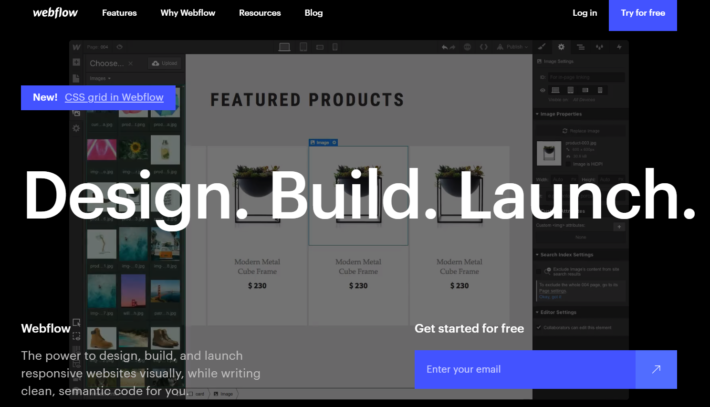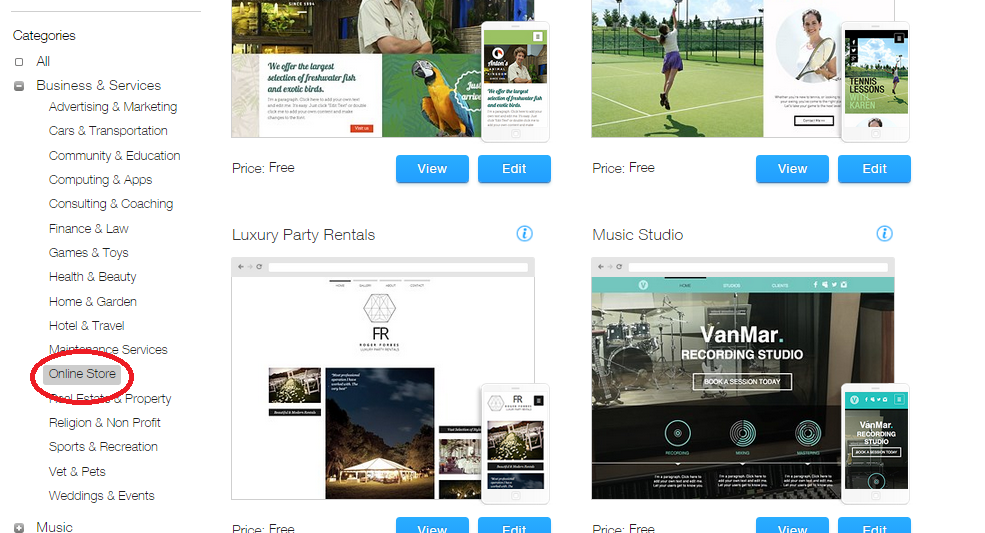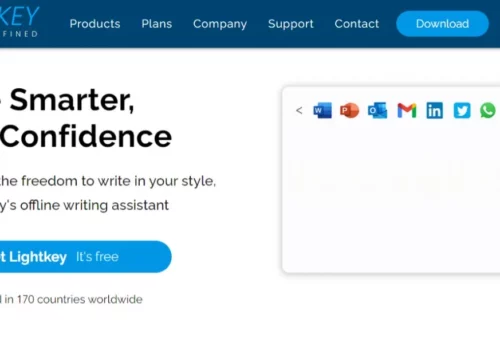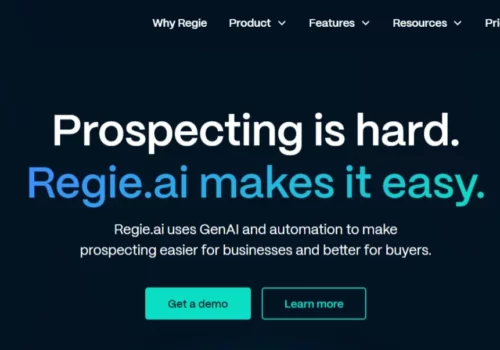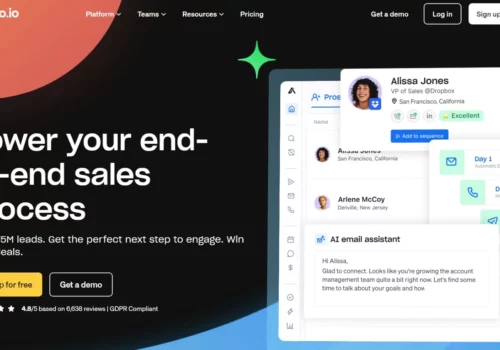Powerful and affordable, Webflow and Wix are the most excellent website builders. This article examines design, user experience, pricing, maintenance, integration, and SEO to help you choose the right platform for your business.
Start with the different types of businesses and how they would benefit from these platforms. Wix is ideal for small enterprises with simple needs and a customizable platform. Companies that need complex website functionality will prefer Webflow.

WebflowLearn More |
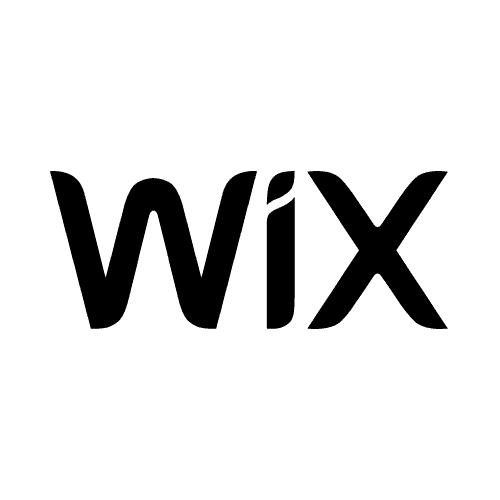
WixLearn More |
|---|---|
| $ Pricing | Free | $4.50 |
| Best for |
Webflow is a SaaS application that allows designers to build responsive websites with browser-based visual editing software. While designers use the t |
Wix is a well-known cloud-based website development platform with millions of users worldwide. It received our 2019 Best eCommerce Software Award. Wix |
| Features |
|
|
| Pros | |
|
|
| Cons | |
|
|
| Ease of Use | |
|
Webflow has a more dynamic approach to web design, having been developed with the requirements of experienced web developers in mind. |
Wix is a website builder that is straightforward for any user, regardless of their available talents, prior web design expertise, or desired outcome. |
| Value For Money | |
|
Webflow also provides a free plan, which is fantastic news given that you’ll likely want more than the standard 14-day trial period to get acquainted with the platform. The free package includes all of Webflow’s design capabilities. |
Wix offers a free plan that enables you to evaluate the platform’s functionality before committing. |
| Customer Support | |
|
Webflow’s customer support staff is available Monday through Friday from 6 a.m. to 6 p.m. PT. They will attempt to contact you within 24 to 48 business hours. |
Wix provides customer support 24 hours a day. You’ll need to answer a few questions regarding your problem on Wix’s contact page, and Wix will arrange for a callback. This service is accessible 24 hours a day in English. |
While both platforms support eCommerce, none is well-suited for high-volume online sales sites. They can be linked with Shopify.
Still, I always advocate working with the best platform for your requirements and not complicating things, which is why neither Wix nor Webflow is the most excellent alternative for high-volume eCommerce sites in most cases.
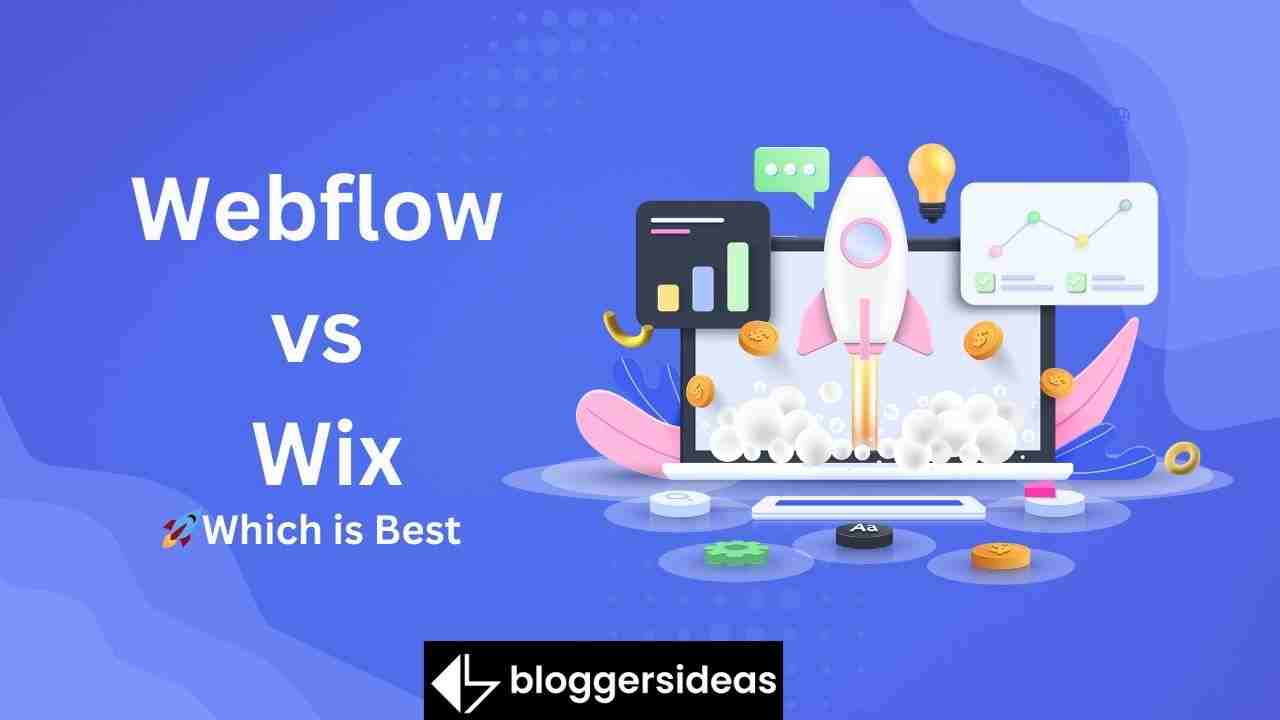
What are the main differences between Webflow and Wix?
The primary distinctions between Webflow and Wix are as follows:
- Webflow has a ‘University’ component with tutorials, while Wix is accessible through email.
- Webflow integrates with Zapier, whereas Wix is more user-friendly.
- Webflow allows for complete customization, while Wix relies heavily on templates.
- Webflow has an HTML CSS website editor. However, Wix does not need any coding.
Webflow vs Wix: Which one is Easier to Use?
Wix is a website builder that is straightforward for any user, regardless of their available talents, prior web design expertise, or desired outcome.
Enrolling in the system takes around a minute and requires no effort. You’re taken to the control panel following registration, which is intuitive and well-organized.
Wix’s control panel is divided into the Dashboard and the Editor. This enables you to monitor and manage each stage while working on your project’s development, ensuring faults are corrected on time.
Wix’s WYSIWYG website builder lets you choose a favorite template and personalize it to your specific requirements and standards.
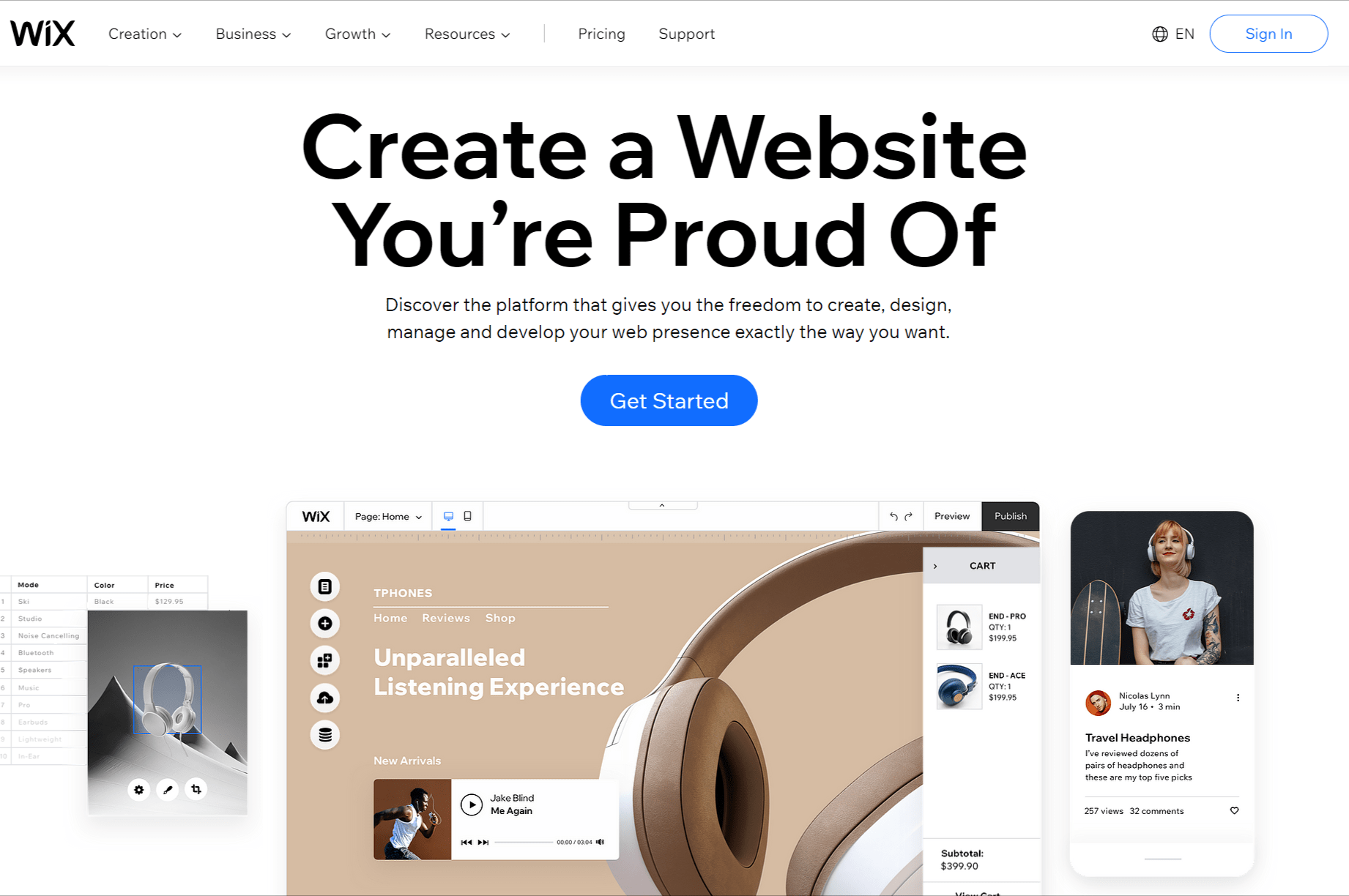
Wix engineers constantly attempt to simplify the site construction process without sacrificing the ultimate result.
Today, the website builder has an updated, redesigned editor that enables the creation of modern websites complete with extensive parallax scrolling effects, simple navigation, video backdrop integration possibilities, and other strong effects.
The website builder’s customer support staff is user-friendly and constantly available to help customers with issues.
The service distinguishes itself from the competition with its intuitive interface, simple navigation, and valuable prompts, suggestions, and guidance on utilizing this or that website piece or function successfully.
Whichever editable part you choose, a question mark will appear to give all necessary information and practical recommendations.
If you have any questions or cannot find an answer, the website builder allows you to visit its Forum or Support Center.
The Wix knowledge base also includes step-by-step instructions, recommendations, and how-to videos that ease the platform’s use. Finally, there is the option of contacting Wix professionals through email support.
Webflow has a more dynamic approach to web design, having been developed with the requirements of experienced web developers in mind.
The system has many capabilities and tools, which, if underestimated, might result in lousy project quality. The signup procedure is equally fast and straightforward here.
Still, you’ll need considerably more time to familiarize yourself with the service’s control panel and explore all of its tools, categories, aspects, and sections.
The website builder includes several sophisticated toolbars, an HTML/CSS website editor, and advanced design modification tools that need extensive knowledge and, in some cases, a background in web design.
Webflow’s UI is far from easy and obvious – there is plenty to read, research, and learn here, and at first, it seems comparable to Webydo.
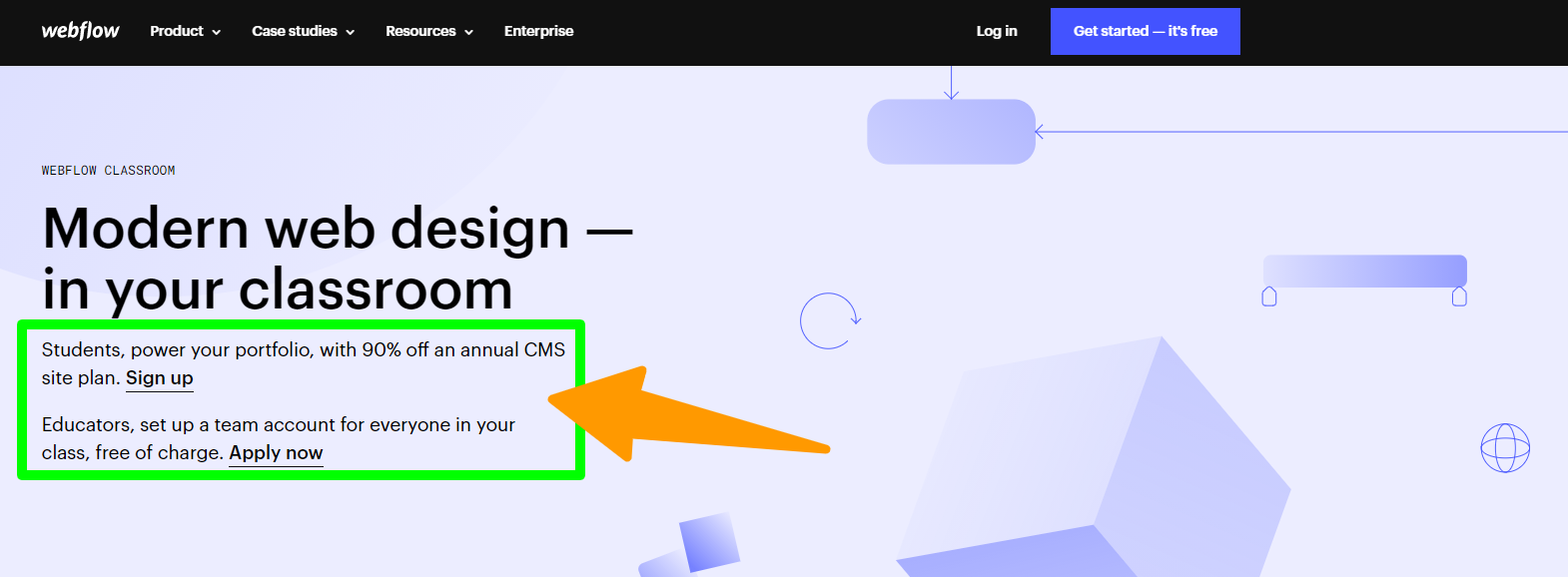
First-time customers will undoubtedly be perplexed by the multitude of tools and options in the service’s control panel.
However, it should be noted that the system’s interface is logically arranged, which facilitates an investigation.
The website builder’s customer assistance tools are also pervasive and beneficial. Initially focused on the demands of professionals, the website creator believes it is critical to emphasize the educational component.
You may access the University area from here, where you’ll find several video lessons, a robust knowledge base, and other high-quality resources accessible in editing mode.
Additionally, users may access a forum and a blog inside the system.
They can learn crucial information about the service’s fundamentals – join and explore social media groups, read books and guidelines, and engage in conversations to get answers to your system-related queries.
Concerning technical help, it is offered here 24 hours a day. Live chat, email support, and the system’s massive community will address most of your Webflow-related queries.
Wix seems to be a more straightforward site construction option that is also easier for every user in terms of simplicity.
The website builder takes a direct approach to web creation, making it more straightforward to understand the platform without requiring technical expertise.
Additionally, customer assistance choices are expanded here, while Webflow does not trail behind its opponent regarding technical help. You need a little time to familiarize yourself and begin working with the platform.
Webflow vs Wix: Pricing Plans
After covering so much area, there is one more critical issue to consider: cost. How much would Wix and Webflow cost you every month?
Wix offers a free plan that enables you to evaluate the platform’s functionality before committing. As you may anticipate, there are a few caveats to this.
For starters, you cannot join a custom domain and are limited to 500MB of storage and bandwidth.
Additionally, you are unable to accept online payments or utilize Google Analytics. Nonetheless, you may use all of Wix’s web design capabilities to create and publish your website utilizing a Wix subdomain.
Wix’s premium plans are divided into website and eCommerce options. The latter is required to accept online payments.
In comparison, the former should serve for developing a straightforward personal or commercial website, portfolio, or blog.
Website options begin at $4.50 per month, while eCommerce plans start at $17. More information about the programs is available on Wix‘s pricing website.
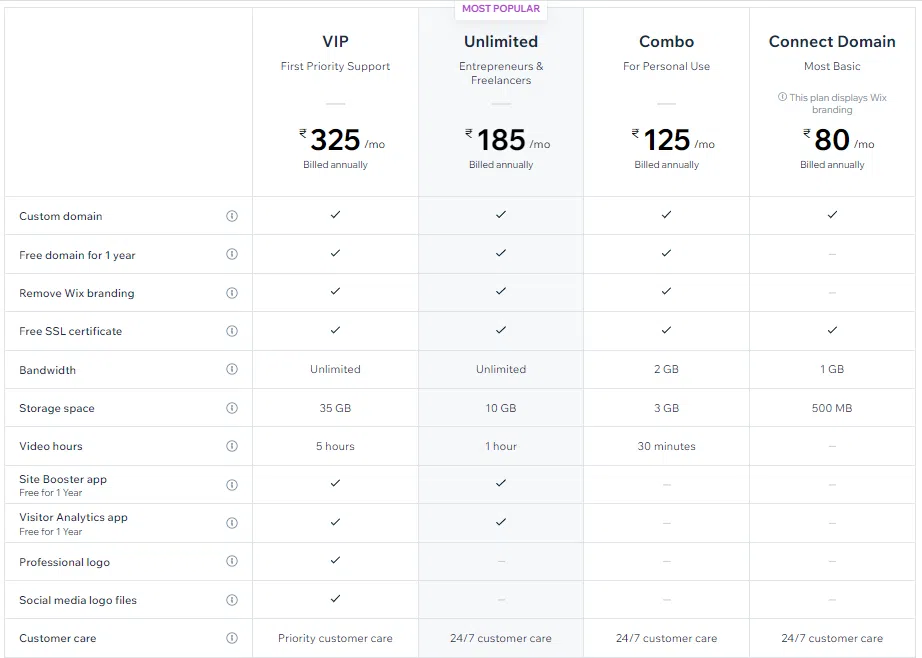
Webflow also provides a free plan, which is fantastic news given that you’ll likely want more than the standard 14-day trial period to get acquainted with the platform. The free package includes all of Webflow’s design capabilities.
However, you can only work on two projects (websites) at a time and test your site by publishing to a webflow.io web address.
In that sense, Webflow’s free plan is less like a free website and more like a free testing environment without time constraints.
As with Wix, there are two payment options: site plans (which start at $12 per month) and account plans (which start at $16 per month). The former is geared toward individuals and companies interested in developing their websites.
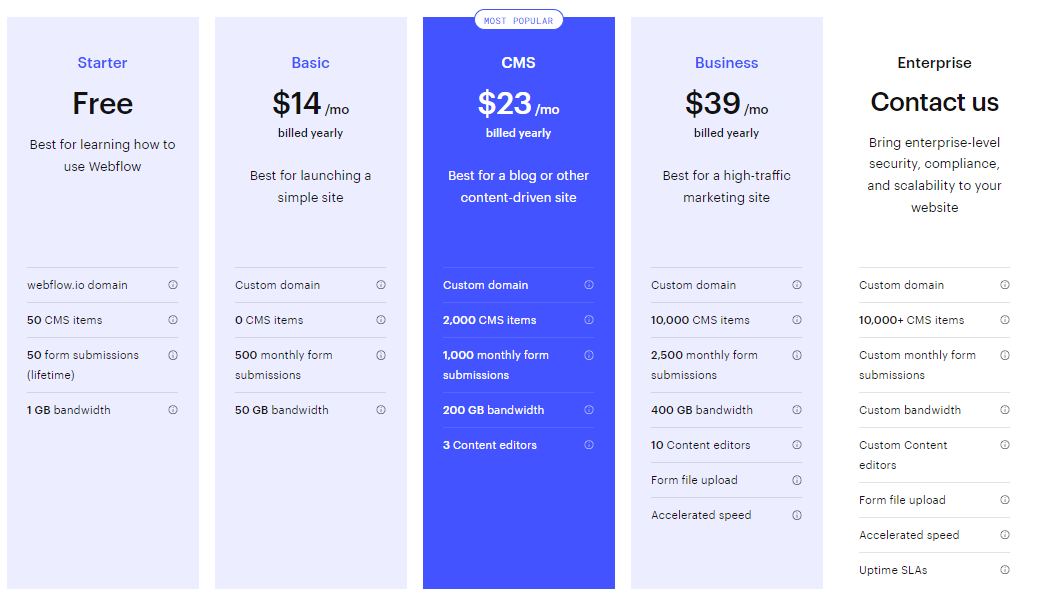
By contrast, the latter is aimed at web professionals and agencies looking to construct several websites for customers commercially.
Webflow’s site plans are classified further as website plans (which begin at $12 per month) and eCommerce plans (which start at $29 per month).
Each website plan is for a single website, and you may subsequently add an eCommerce plan to an existing website plan. Annual billing saves you 15%. More information is available on Webflow’s pricing page.
Wix and Webflow provide consumers with free plans and cheap price levels to start. While Webflow’s price structure is more complex, its offerings are more diverse and expand with each subscription level.
On the other hand, Wix drastically restricts your storage space and bandwidth to entice you to upgrade but does not provide any more functionality.
Rather than that, it utilizes third-party applications to reward higher-paying consumers.
Wix compensates for this with its eCommerce options, which put no restrictions on the number of things you can sell or the annual income earned.
Webflow vs Wix: Pros & Cons
Webflow Pros and Cons
| Pros | Cons |
| Includes web hosting | Limited availability of templates |
| Simplifies collaboration with development teams | No option to create client accounts |
| Flexible pricing options | Complicated process for creating a blog |
| Active Webflow community | Lack of 24-hour contact assistance |
| Abundance of instructional resources | Inability to publish projects on the free plan |
| Account plans for agencies and freelancers | Steep learning curve |
| Free plan for experimentation and learning | |
| Access to sophisticated SEO tools | |
| Customizable site elements | |
| Extensive customization and design tools for web professionals |
Wix Pros and Cons
| Pros | Cons |
| Includes web hosting | Inability to change website theme without erasing content |
| Customer accounts and eCommerce features | Rudimentary SEO capabilities |
| Easy integration of a blog and online shop | Limited customization options for highly personalized designs |
| Simplified implementation of SEO through Wix’s SEO wizard | Storage and bandwidth restrictions on cheaper plans |
| Free plan with the opportunity to go live on a Wix subdomain | |
| Wide selection of professionally designed templates | |
| User-friendly interface, no coding or web design expertise required | |
| Multilingual support | |
| 24/7 customer service on all plans |
Webflow vs Wix: Who Offers Better Website Templates?
You might consider using a template if you’re searching for a fast approach to creating a website. Both Wix and Webflow provide hundreds of templates for various themes.
For instance, whether you’re a writer or a yoga instructor, you may discover many fantastic designs with all the necessary pages.
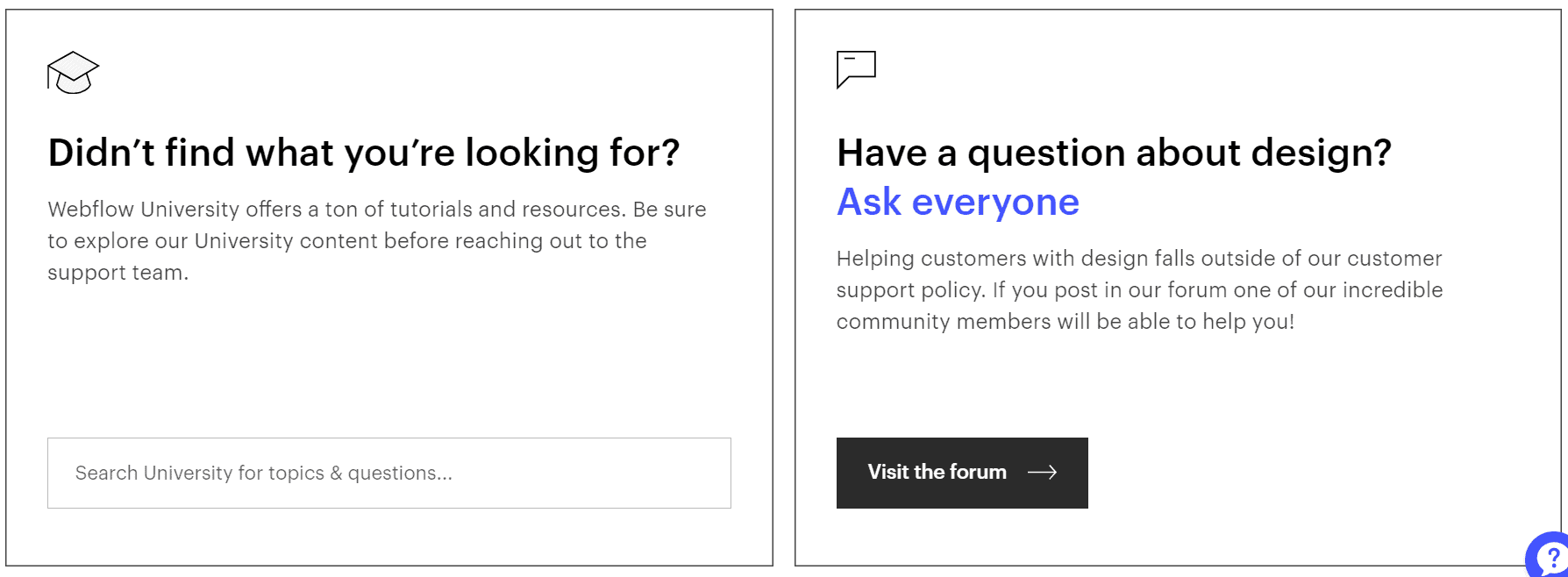
Wix presently offers over 800 professionally designed templates. This number continues to rise as new templates are uploaded, and current ones are routinely updated and enhanced with new components and features.
The majority of the templates are responsive, which means they work well on smartphones and tablets.
Several free templates are available, and you can use the preview tool to check how the theme will appear on desktop and mobile devices before installing it.
Wix customers often employ themes since they are not expert developers or designers. However, that is also an option if you don’t want a piece and want to start from scratch.
One risk to avoid using Wix themes is that once you begin altering them, you cannot swap them. As a result, it’s critical to invest some time in selecting pieces to find one you’ll like throughout.
Webflow has over 500 templates that enable you to personalize your site easily. Every day, new templates are generated. While some themes are free, the bulk costs $20 and $100+.
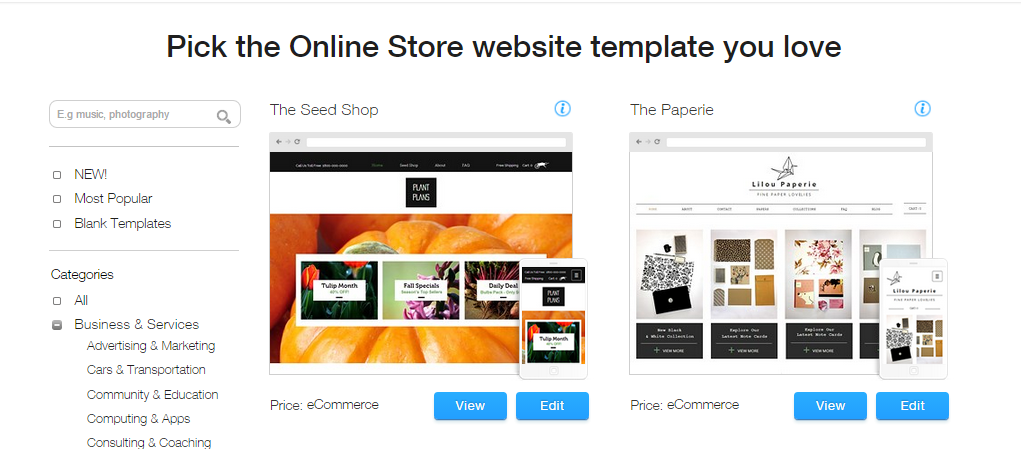
An excellent template explorer on the official site allows you to browse the articles by category, style, feature set, and kind.
If you’ve developed websites in the past and know precisely what you’re searching for, you’ll be able to click on the appropriate template and begin modifying it quickly.
Flow Ninja often provides new templates as one of Webflow’s Enterprise Partners. Thus far, we’ve built 17+ excellent templates; feel free to peruse them if you want to expedite the website-building process.’
Once again, I struggled to choose a winner. To be quite candid, personal tastes played a role in the selection.
I prefer Webflow templates since they are much more extensive than those supplied by Wix, even though they are fewer in number (for now).
Our staff likes developing new themes, which means I have a unique perspective on how these templates perform, and all I can say is that they are pretty strong.
Webflow Vs. Wix: Customer Support
When you invest money in your company, you want to be sure you will get the help you wish for a problem. Thus, let us analyze the assistance available with Wix and Webflow.
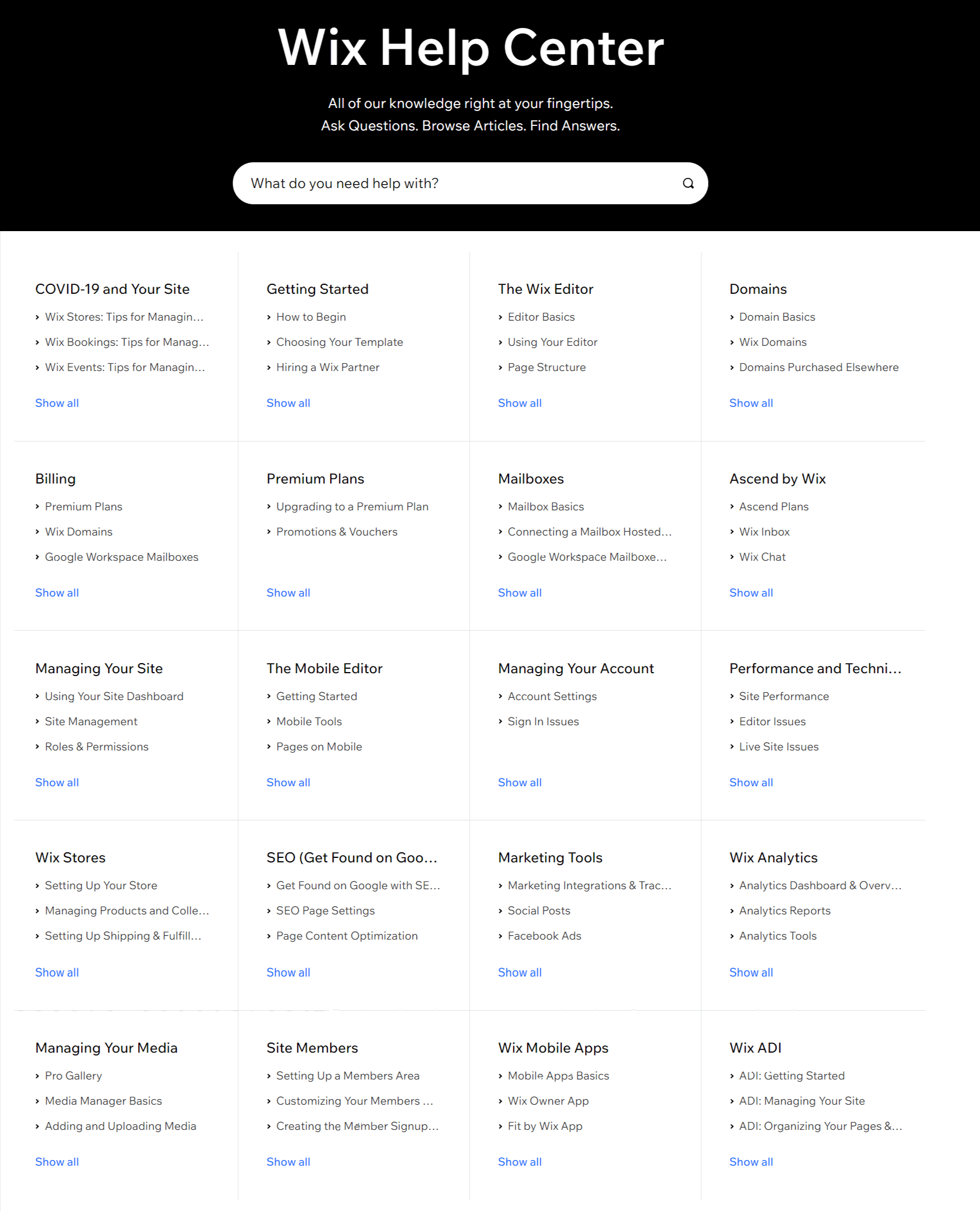
Wix provides customer support 24 hours a day. You’ll need to answer a few questions regarding your problem on Wix’s contact page, and Wix will arrange for a callback. This service is accessible 24 hours a day in English.
Support is provided in other languages during business hours (about 9 a.m. to 5 p.m. in the relevant time zones). Because Wix does not offer live chat, your only contact options are email and Wix’s callback service.
Additionally, you can access comprehensive self-help documentation covering everything from Wix’s editor to price plans, billing, domains, getting started, eCommerce, and marketing services.
Additionally, as indicated in the Ease of Use section, Wix includes a convenient in-editor help button directing you to the appropriate self-help tools.
Webflow’s customer support staff is available Monday through Friday from 6 a.m. to 6 p.m. PT. They will attempt to contact you within 24 to 48 business hours.
Webflow’s customer care staff may be contacted solely by email or support tickets.
You can also submit a question on Webflow’s community forum and get guidance from your peers. Alternatively, if you prefer self-help, check Webflow University.
This includes several online lectures on how to get started, use Webflow’s editor, SEO, the CMS, eCommerce, generating animations, and even a Webflow 101 crash course, to name a few!
Choose between basic and advanced classes! These courses differ in terms of content and duration. However, I’ve seen a handful that is longer than six hours!
Webflow delivers extensive and relevant knowledge that will assist you in the beginning to climb that learning curve.
Finally, Webflow has an expert directory. It’s simple to hire the professional assistance of an agency or freelancer to assist with your project.
Webflow has slower response times and fewer ways to reach the staff during restricted hours. However, it provides practical self-help tools in the form of whole courses.
These are excellent resources for anybody attempting to understand the tool’s ins and outs. Despite this, Wix wins because of their superior 24/7 customer assistance.
Customer Testimonials: Webflow vs Wix
Webflow Customer Testimonials
Wix Customer Testimonials
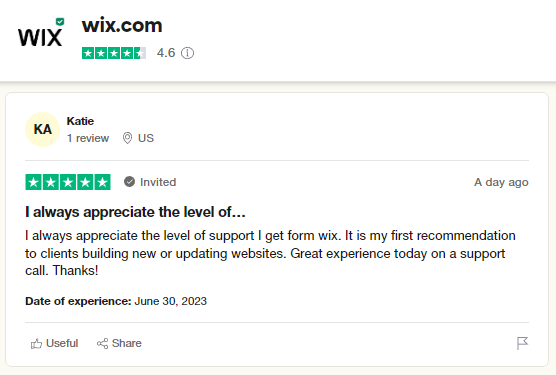
FAQs: Webflow vs Wix
😯 Is Wix better than Webflow?
Webflow snatches the win in terms of customization and site design. Not only are its design features more sophisticated than those of Wix, but they are also superior to those of the majority of website builders on the market.
🤔 Is Webflow the best website builder?
Webflow is a drag-and-drop website builder that is simple to use and highly customizable. Wix and Weebly both have a limit on the number of adjustments you can make — other site builders do as well; it’s the price of not having to develop a website! Webflow’s site builder is one of the most configurable on the market.
🤷♀️ Is Webflow that good?
Absolutely. Webflow is an excellent drag-and-drop tool for creating dynamic web pages. If you’re a designer looking for more flexibility in creating distinctive layouts without code, Webflow is your best choice. If you’re a developer, Webflow is an excellent tool for prototyping.
❓ Who are Webflow competitors?
Hubspot, Wix, Bubble, Duda, Pantheon are some of the major competitors of Webflow.
Quick Links
- Wix vs Shopify vs WooCommerce vs BigCommerce
- Steps To Create Your Own Website With Wix.com
- Build a Website in 2 Months for Free with TemplateMonster & Marathon
Conclusion: Webflow vs Wix – Which is Best in 2024
The decision between Wix and Webflow might be difficult, particularly for non-techies who lack extensive site design experience yet want a solution that meets their requirements.
Both website builders are worthy rivals, even though each caters to a different customer segment, covering a wide range of web design demands.
Which service, therefore, is the clear winner in this comparison? Take into account your priorities and provide sufficient time to evaluate both systems.
Webflow is a good choice for skilled web designers, while Wix is an all-in-one website builder that can accommodate both novices and pros.
Wix as a platform has many sophisticated features, including professional templates and the tools necessary to personalize them easily.
These advantages make website builders the optimal answer for most consumers’ web design needs.

